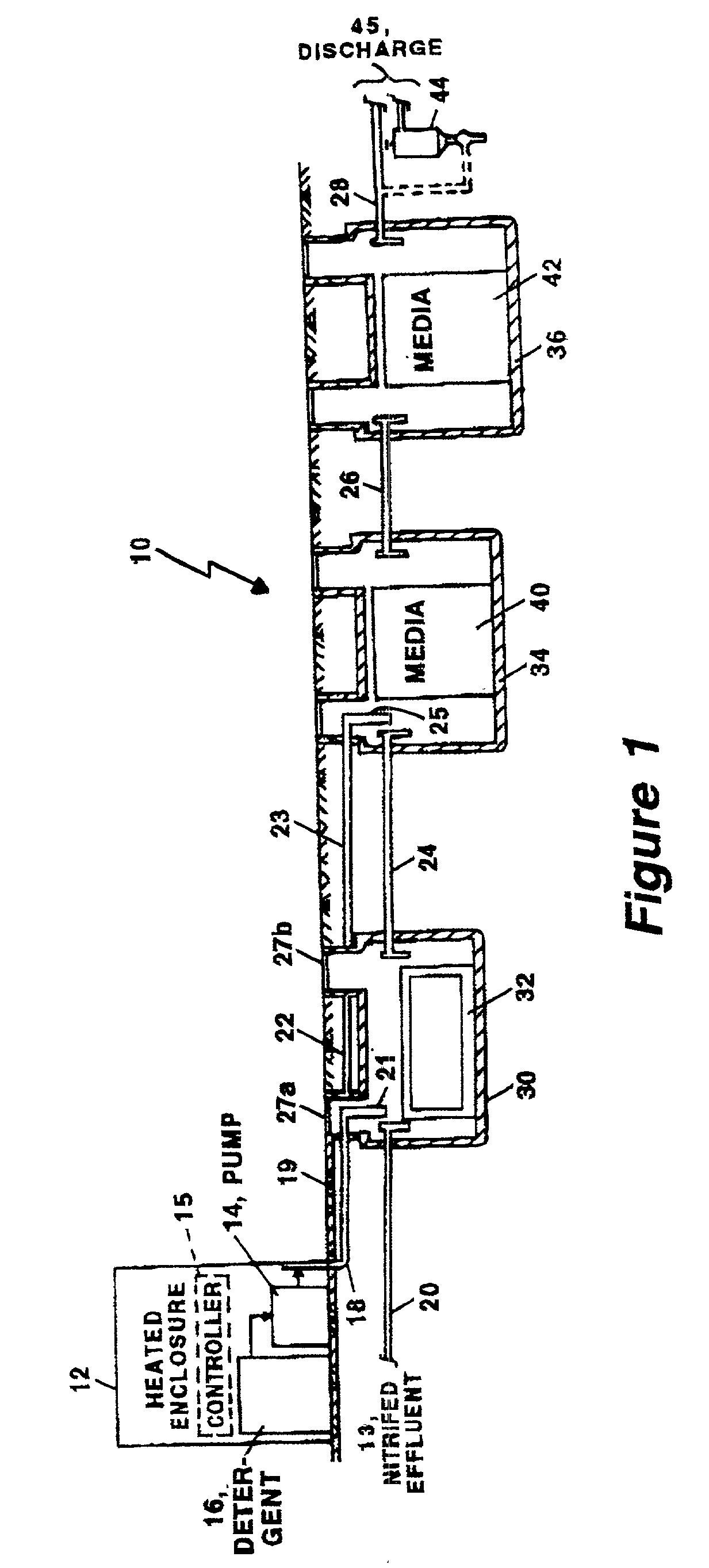Denitrification system for nitrified wastewater or nitrified water
a technology of denitrification system and nitrification water, which is applied in the direction of filtration separation, other chemical processes, separation processes, etc., can solve the problems of adverse effects of algae growth, and health risks to human beings, and achieve the effects of reducing the risk of toxicity
- Summary
- Abstract
- Description
- Claims
- Application Information
AI Technical Summary
Benefits of technology
Problems solved by technology
Method used
Image
Examples
Embodiment Construction
[0031] Referring to FIG. 1, a side elevational, partial cross-sectional view of the invention of the denitrification system for treating nitrified wastewater or nitrified water is shown. A method of denitrification comprises steps for removing nitrate (NO.sub.3) and nitrite (NO.sub.2) from nitrified wastewater or nitrified water. The method is bacterial driven and the nitrates and nitrites are reduced to nitrogen dioxide N.sub.2O and nitrogen N.sub.2 which are gaseous forms of nitrogen released into the atmosphere.
[0032] The term "wastewater" herein is meant to include any waste stream containing organic nitrogenous compounds and includes domestic and business sewage and waste. The term "nitrified water" refers to water with nitrate or nitrite concentration and includes treated wastewater, ground water, process waters and some runoff. The term "effluent" as used herein refers to wastewater or any modification thereof at any given point along the wastewater treatment system. "Nitrifi...
PUM
| Property | Measurement | Unit |
|---|---|---|
| concentrations | aaaaa | aaaaa |
| Concentrations | aaaaa | aaaaa |
| concentration | aaaaa | aaaaa |
Abstract
Description
Claims
Application Information
 Login to View More
Login to View More - R&D
- Intellectual Property
- Life Sciences
- Materials
- Tech Scout
- Unparalleled Data Quality
- Higher Quality Content
- 60% Fewer Hallucinations
Browse by: Latest US Patents, China's latest patents, Technical Efficacy Thesaurus, Application Domain, Technology Topic, Popular Technical Reports.
© 2025 PatSnap. All rights reserved.Legal|Privacy policy|Modern Slavery Act Transparency Statement|Sitemap|About US| Contact US: help@patsnap.com



